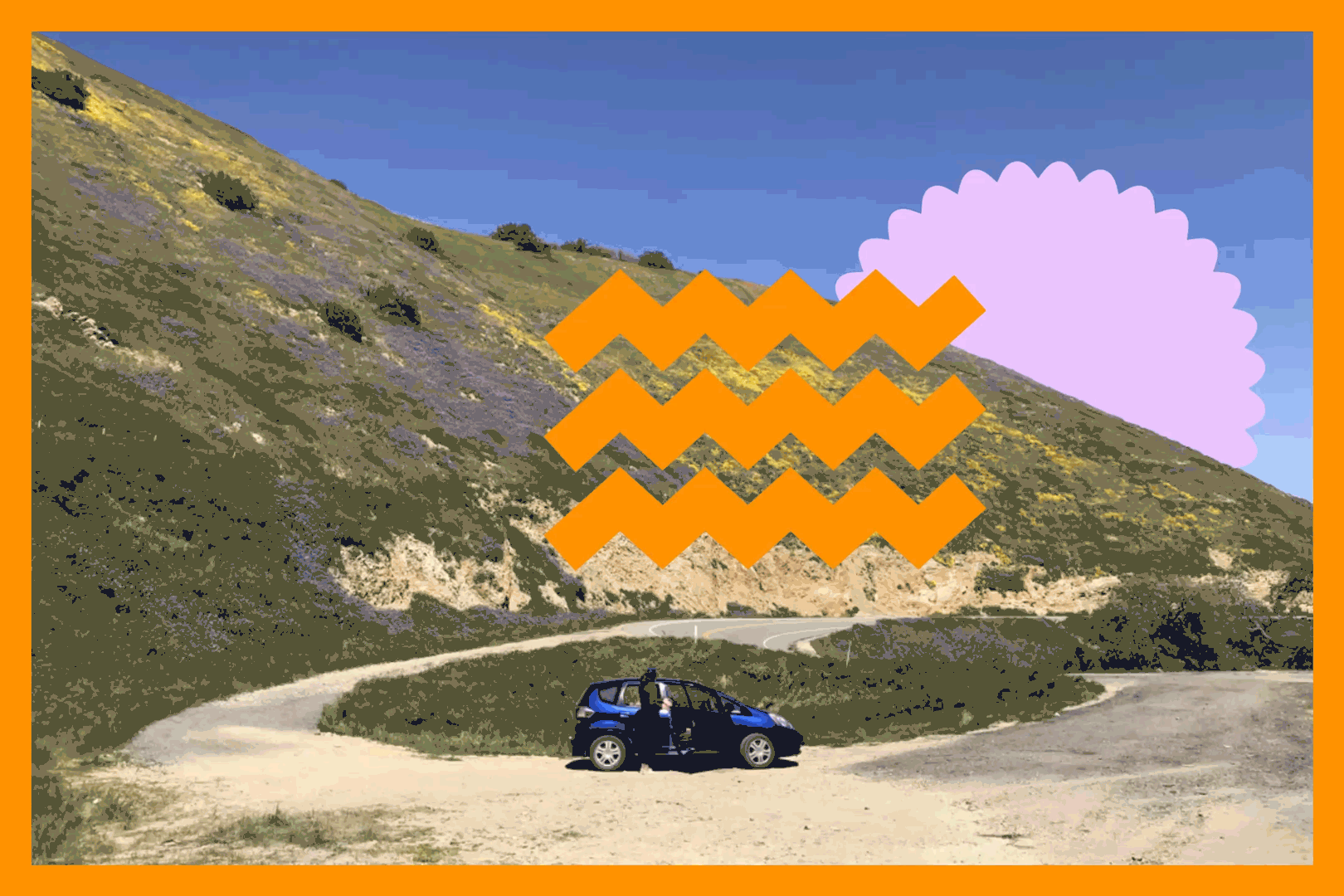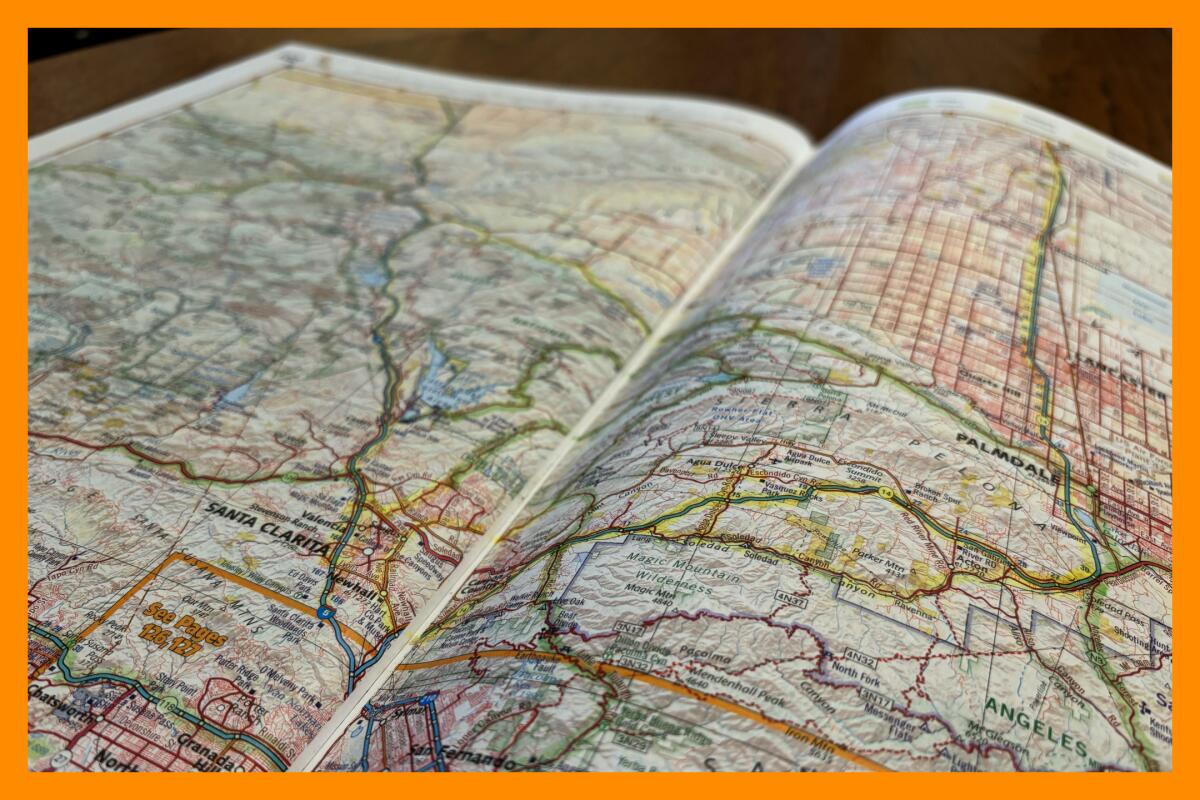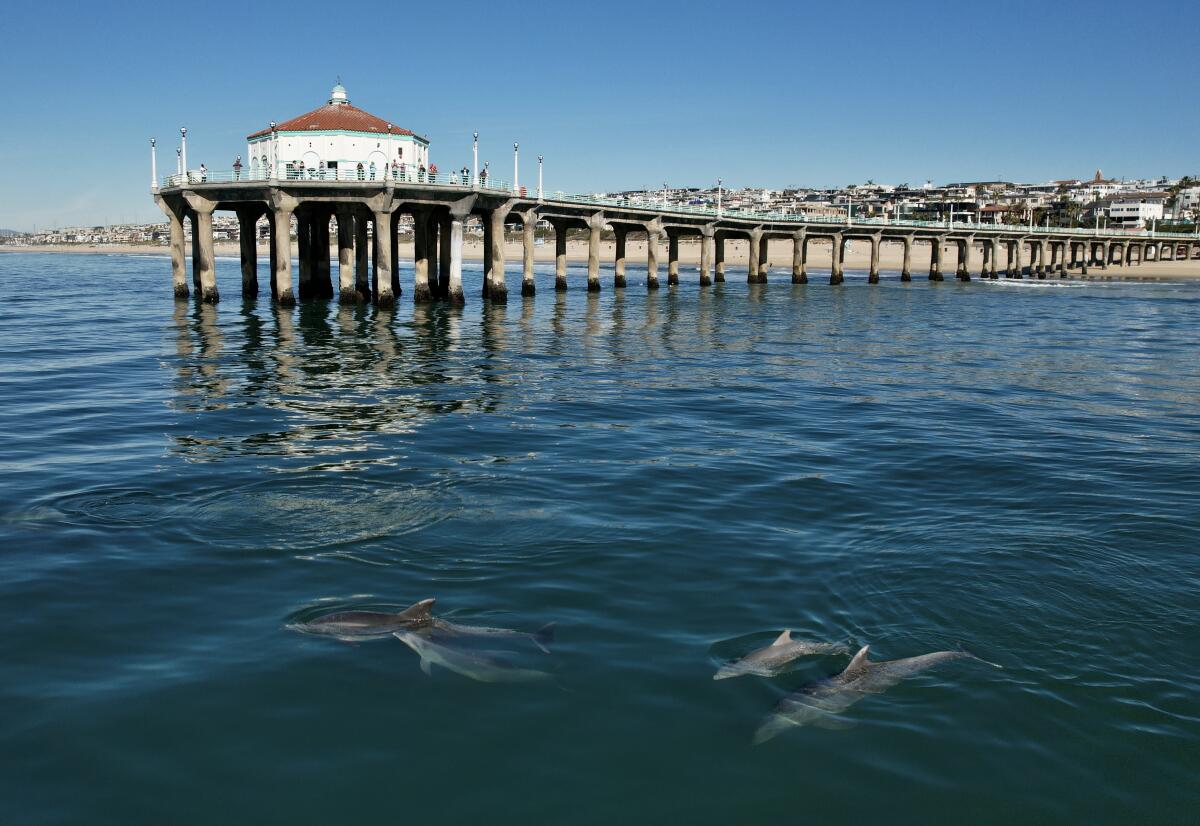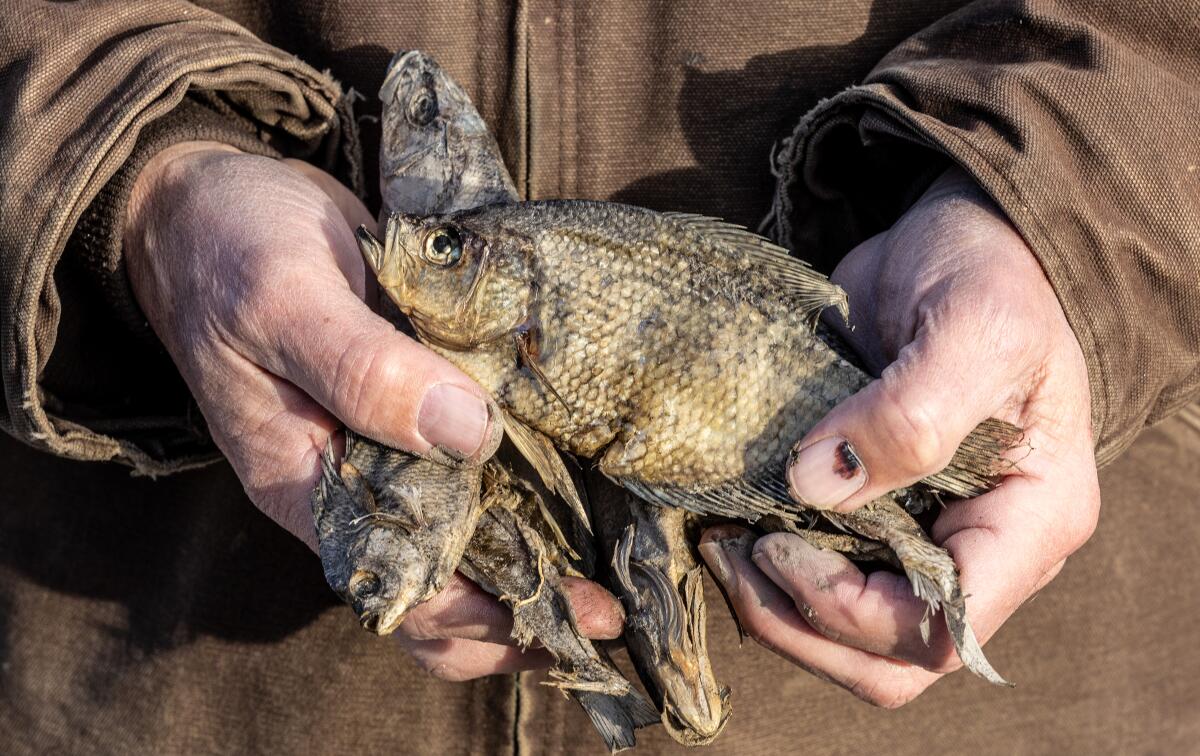Pair these L.A. road trips with a hike and a lunch

In April 2020 — only a month or so into the COVID-19 pandemic — my wife and I were running out of things to do. The novelty of Zoom calls with friends was wearing off. We’d watched lots of movies and TV. We were itching to get out of our apartment, but with the virus still raging, we couldn’t risk being around other people. Then we had an idea: Why not go for a drive?
You are reading The Wild newsletter
Sign up to get expert tips on the best of Southern California's beaches, trails, parks, deserts, forests and mountains in your inbox every Thursday
You may occasionally receive promotional content from the Los Angeles Times.
For our first trip, we drove the length of Little Tujunga Canyon Road in the Angeles National Forest. After that, we were hooked. In the ensuing months, we crisscrossed the Santa Monica Mountains and made trips into Los Padres National Forest and beyond.

My wife bought me a California road atlas, and it became part of our scenic drive ritual: We’d consult its pages for inspiration, looking for two-lane roads and state highways that squiggled through mountain ranges or meandered through deserts. After returning home, I’d highlight our route. Four years after our first drive, the atlas is full of highlights documenting our travels — and there’s still a lifetime’s worth of backroads we haven’t covered yet.
No matter where we go, each drive gives me a deeper appreciation for the incredible range of landscapes in Southern California. And these journeys have led to many rewarding discoveries, from out-of-the-way diners to new trailheads for hiking and biking.

If you’re tired of visiting the same places, it’s time to hit the road. These two trips — all within a three-hour drive of the city — will get you started.
Los Padres National Forest and Carrizo Plain National Monument
This route traverses winding mountain roads through Los Padres and spits you out near the southern entrance to Carrizo Plain — a vast preserve of native grassland and a hotspot for wildflowers (at least on some years) and birdwatching. From Interstate 5, take Exit 205 and head west on Frazier Mountain Park Road. This two-lane road changes names several times as it ascends into the San Emigdio Mountains, passing forested slopes and epic canyon views along the way.
After about 42 miles, you’ll meet California 166. Take a right here and then a left on Soda Lake Road to enter Carrizo Plain National Monument. Drive northwest for 35 miles to the parking lot for the Soda Lake Trail, a short boardwalk that gets you up close to the park’s salt-crusted lake. If you plan ahead, you can also book a guided tour of Painted Rock, a sandstone outcrop with Native American rock art.
Hungry? Head back the way you came, take a right on California 166, and drive west 15 miles to the Cuyama Buckhorn, a renovated ’50s motel, restaurant and bar. The eatery’s Santa Maria-style tri-tip is superb, and if you grab a room, you can turn this scenic drive into a full weekend escape.
Volcan Mountain and Julian
This route will take you to Julian, a mountain town famous for its apple orchards and delicious pies. From Interstate 15, take Exit 58 for California 79. Take a right on Pechanga Parkway and head south. The road becomes Pala Temecula Road and emerges into a wide canyon with mountains towering on either side. Take a left at Pala Mission Road and continue east on California 76, which hugs the San Luis Rey River before ascending more than 1,000 feet up a chaparral-covered ridgeline.
After some hairpin turns, the road levels off and skirts Lake Henshaw, a picturesque reservoir. Take a right on California 79, and after 10 miles, take a left on Wynola Road. Follow that road for about 3.5 miles, then take a left on Farmer Road to arrive at Volcan Mountain Wilderness Preserve. Stretch your legs on the Five Oaks Trail, a 1.2-mile path that ascends the western flank of Volcan Mountain and offers sweeping views of the orchards below.
With your appetite revved up, head south on Farmer Road into Julian and make a stop at the Julian Pie Co. Grab a well-deserved slice of apple pie and some apple cider and rest your feet at a picnic table while you chow down.

3 things to do

1. Race plankton in Manhattan Beach
In celebration of Earth Day, the Roundhouse Aquarium will hold a day full of educational activities inside and outside its facilities. Highlights include dolphin spotting, a fish feeding, crafts, games, a “shark shack” and, yes, plankton racing. The festivities kick off at 10:30 a.m. Saturday and go until 4 p.m. The event is free, but be sure to register ahead of time at roundhouseaquarium.org.
2. Go gardening in San Pedro
Give back to the land by planting native species, removing weeds, mulching and watering the White Point Nature Preserve’s garden with the folks at Palos Verdes Peninsula Land Conservancy. You’ll also have the chance to enter a raffle and take a guided nature walk. As a bonus, refreshments will be provided by Starbucks to keep you cool and hydrated. The three-hour event begins at 9 a.m. Saturday. All volunteers under age 16 should be accompanied by an adult, and all volunteers under age 18 must have a parent or guardian sign a waiver at the event. Register at pvplc.com.
3. Stretch your legs on Venice Boulevard
CicLAvia is back. And this time it’s shutting down a 5.75-mile stretch of Venice Boulevard that connects Palms, Mar Vista and Venice Beach for walkers, joggers, bikers, roller skaters, unicyclers, penny-farthings, pogo sticks — anything as long as it’s completely powered by humans. There will be three local hubs along the route where you’ll be able to partake in family-friendly activities, pump air into your bike’s tires, refill your water bottle and use the restroom. Be sure to reference CicLAvia’s digital map so you can scope out the local businesses you’d like to visit along the way. It all takes place from 9 a.m. to 4 p.m. Sunday. For more information about the event and the area it covers, visit ciclavia.org.

The must-read

The Klamath River in Northern California has turned brown and muddy, but that’s a good thing. As Times writer Ian James reports, it’s a side effect of the largest dam removal project in history, which aims to restore the river to its natural state. Four dams are being removed along the Klamath, and the river is passing freely through tunnels in three of them, draining reservoirs and churning up an estimated 2.3 million tons of sediment that had settled along the bottom of those man-made lakes. Although the turbid water might look ugly, restoration advocates and tribal leaders see it as a sign of healing. The muck is passing out of the Klamath, and new life — everything from salmon heading upstream to native plant seedlings along the riverbanks — will soon take its place.
Happy adventuring,

P.S.
Want to try birding but don’t have binoculars? Head to the Audubon Center in Ernest E. Debs Regional Park. The center is open from 8 a.m. to 4 p.m. Thursday through Sunday, and you can borrow a free pair of binoculars (as well as a birding guide, backpack and other gear) to help you spot the 140 species of birds that call the park home.
For more insider tips on Southern California’s beaches, trails and parks, check out past editions of The Wild. And to view this newsletter in your browser, click here.
Sign up for The Wild
We’ll help you find the best places to hike, bike and run, as well as the perfect silent spots for meditation and yoga.
You may occasionally receive promotional content from the Los Angeles Times.




